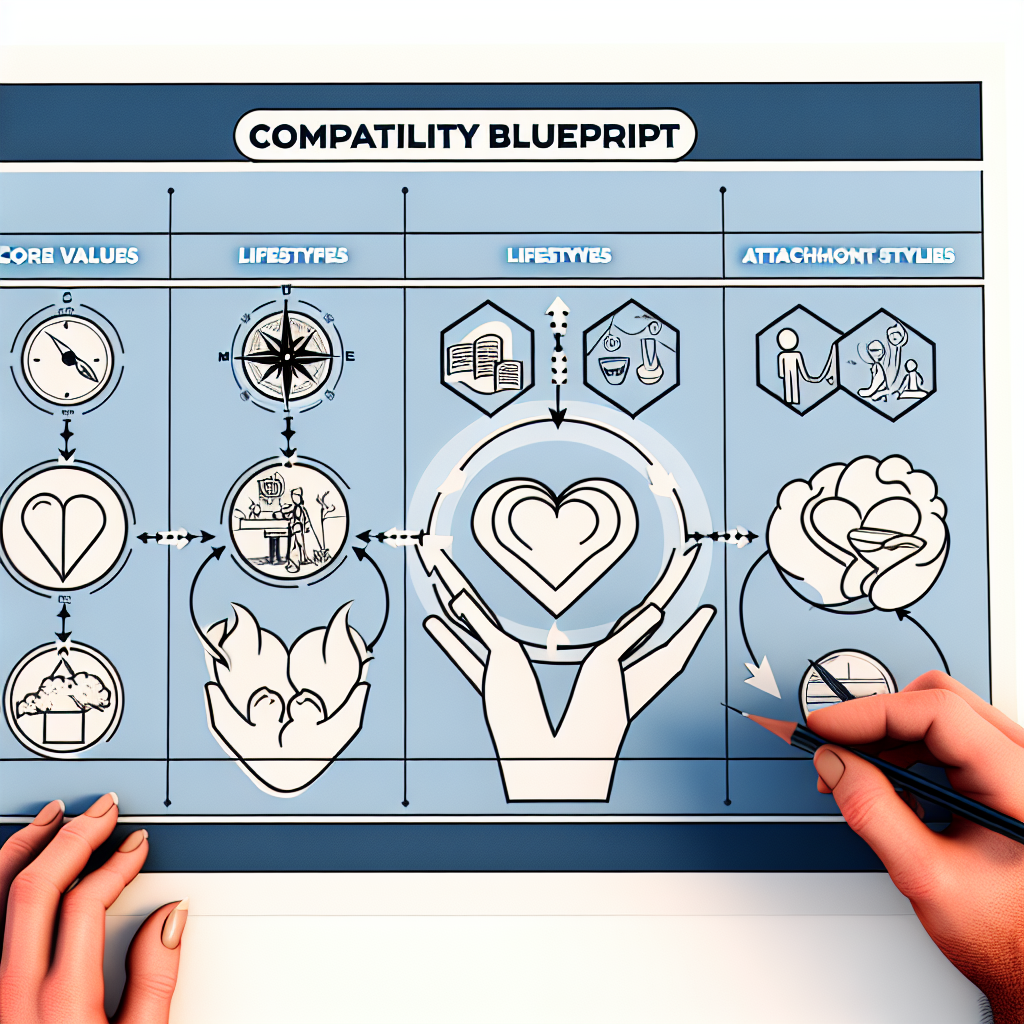The 3-Month Relationship Plateau: Navigating the Critical Phase When Novelty Fades
Introduction
The early days of a new relationship are often exhilarating, filled with heart-racing excitement, deep conversations, and an insatiable desire to spend time together. However, as many couples approach the three-month mark, they may notice a shift—the honeymoon phase starts to wane, novelty fades, and real relationship dynamics emerge. This turning point is often referred to as the three-month relationship plateau, a phase where couples move from infatuation to a more stabilized connection, or in some cases, face the reality that the relationship may not have long-term potential.
At this stage, partners may begin noticing each other’s flaws, individual habits, or compatibility differences. The thrill of first dates, spontaneous trips, and late-night talks gradually transitions into a routine. For some, this phase brings a deepening commitment, but for others, it introduces doubts, conflicts, and potential distancing. Many relationships end around this point as the euphoria fades, leaving one or both partners questioning the future. Studies suggest that emotional attachment, habit formation, and even brain chemistry play essential roles in this transition, making it a crucial period for relationship growth or dissolution.
So why does this shift happen? Science offers some insight. The brain releases high levels of dopamine in the initial stages of attraction, driving feelings of euphoria, obsession, and desire. But over time, this intense chemical reaction naturally decreases, often leading to a sense of emotional cooling. Additionally, couples begin moving past surface-level conversations, revealing deeper aspects of personality, values, and lifestyle choices. If these don’t align, tensions can arise.
Still, the three-month mark is not necessarily a breaking point—it can also be a building moment for those willing to navigate the change with conscious effort. By understanding the psychological and emotional shifts occurring, singles and couples can make informed decisions about whether the relationship is worth investing in long-term or if parting ways is the healthier option.
Whether you’re in your early 20s exploring romantic relationships for the first time, or in your 50s rekindling love after years of dating experience, the three-month relationship plateau is a universal phenomenon. Let’s explore why this phase happens, what studies reveal about it, and how singles can successfully navigate it to forge meaningful and lasting connections.
The Science Behind the Three-Month Plateau
Scientific research provides valuable insights into why relationships often hit a plateau around the third month. Psychology and neurology play an integral role in how attraction, attachment, and emotional intimacy develop.
The Role of Brain Chemistry
During the initial stages of dating, dopamine, oxytocin, and serotonin flood the brain, creating the euphoric sensation commonly associated with early love (Fisher et al., 2002). Dopamine, in particular, is responsible for the “addictive” high people often feel when falling in love, driving intense attraction and excitement. However, as time goes on, dopamine production slows, leading to a decrease in passion-driven motivation (Aron et al., 2005).
Oxytocin, known as the “bonding hormone,” plays an essential role in attachment. As couples transition out of the infatuation stage, oxytocin levels begin to stabilize, shifting the relationship from passionate newness to a more comfortable, attachment-based connection (Acevedo & Aron, 2009). While this adjustment is natural, it can feel like a decrease in emotional intensity, causing some to fear that the relationship has lost its spark.
Psychological and Emotional Adjustment
The three-month phase is also when partners move beyond idealized perceptions of one another. Studies show that in the early stages of dating, people tend to idealize their partner, focusing only on positive traits (Murray et al., 1996). However, as familiarity increases, confirmation bias wears off, leading to greater awareness of flaws and incompatibilities. This can result in disillusionment, making individuals question their level of attraction or compatibility with their partner (Campbell et al., 2001).
Furthermore, attachment theory suggests that individuals with avoidant attachment styles may begin to pull away when the relationship deepens (Hazan & Shaver, 1987). This is because deeper emotional intimacy requires vulnerability, which can be challenging for individuals accustomed to emotional self-sufficiency. Conversely, those with an anxious attachment style may worry about losing their partner’s interest, resulting in clingy behaviors that may push the other person away.
The Impact of Daily Habits and Routine Formation
By the third month, couples typically establish a relationship rhythm—deciding how often they see each other, interact, and communicate. While having a routine is essential for long-term stability, it can also diminish excitement if not balanced with novelty (Aron, Norman, Aron, McKenna, & Heyman, 2000). Without intentional efforts to keep things fresh, couples may experience stagnation, feeling as though the relationship is becoming monotonous or predictable.
How to Navigate the Three-Month Relationship Plateau
While the plateau phase can feel daunting, it doesn’t have to signal the end of a promising relationship. Here’s how singles can successfully navigate this period and determine their next steps:
1. Communicate Openly and Honestly
Discuss thoughts, feelings, and concerns with your partner. If something is bothering you, address it directly rather than suppressing emotions. Ask each other what you both need to feel valued and connected moving forward.
2. Prioritize Novel Experiences
Combat routine-induced boredom by trying new activities together—traveling to a new place, taking a class, or engaging in a shared hobby. Novel experiences reactivate dopamine, reigniting excitement in the relationship (Aron et al., 2000).
3. Assess Compatibility
Take an honest look at your relationship dynamics. Ask yourself whether shared values, long-term goals, and emotional needs align. If fundamental differences exist, it may be worth evaluating whether staying together serves both partners’ best interests.
4. Give Each Other Space
Maintain personal independence even within a relationship. Spending time apart fosters individual growth and strengthens attraction, as absence can reawaken desire (Le et al., 2018).
5. Emphasize Emotional Connection Over Excitement
While the initial infatuation phase is thrilling, lasting relationships thrive on emotional intimacy, trust, and deep connection rather than just excitement. Work on building meaningful conversations and fostering emotional safety in your relationship.
Conclusion: Embracing the Relationship Evolution
The three-month relationship plateau is a natural and inevitable transition phase when the rush of new love begins to stabilize. While some relationships falter at this hurdle, others emerge stronger with intentional effort, communication, and mutual understanding. By recognizing the psychological, neurological, and emotional shifts occurring at this stage, singles can make informed decisions about their relationships—whether to deepen the bond or to walk away with clarity.
Ultimately, moving beyond the plateau requires patience, adaptability, and a commitment to growth, ensuring that a relationship has the foundation needed to thrive long-term.
References
– Acevedo, B. P., & Aron, A. (2009). **Does a Long-Term Relationship Kill Romantic Love?** [Journal of Social and Personal Relationships](https://journals.sagepub.com/home/spr)
– Aron, A., Norman, C., Aron, E. N., McKenna, C., & Heyman, R. E. (2000). **Couples’ Shared Activities and the Expansion of the Self in Close Relationships** [Personality and Social Psychology Bulletin](https://journals.sagepub.com/home/psp)
– Campbell, L., Simpson, J. A., Kashy, D. A., & Fletcher, G. J. (2001). **Idealization and the construction of satisfaction in close relationships** [Journal of Personality and Social Psychology](https://www.apa.org/pubs/journals/psp)
– Fisher, H. E., Aron, A., & Brown, L. L. (2002). **The Neural Mechanisms of Romantic Love** [NeuroReport](https://journals.lww.com/neuroreport/pages/default.aspx)
Concise Summary:
The three-month relationship plateau is a natural transition phase where the initial euphoria of a new relationship begins to stabilize. This shift can be attributed to changes in brain chemistry, psychological adjustments, and the formation of daily habits. By understanding this process and navigating it with open communication, novel experiences, and a focus on emotional connection, couples can deepen their bond or make informed decisions about the relationship’s long-term potential.

Dominic E. is a passionate filmmaker navigating the exciting intersection of art and science. By day, he delves into the complexities of the human body as a full-time medical writer, meticulously translating intricate medical concepts into accessible and engaging narratives. By night, he explores the boundless realm of cinematic storytelling, crafting narratives that evoke emotion and challenge perspectives. Film Student and Full-time Medical Writer for ContentVendor.com




